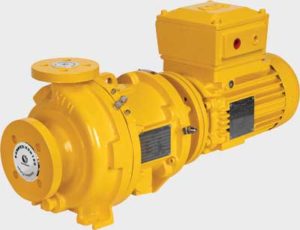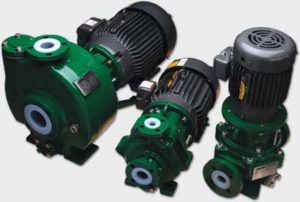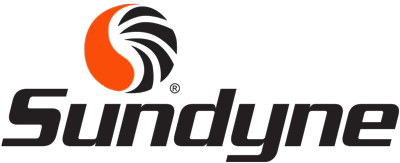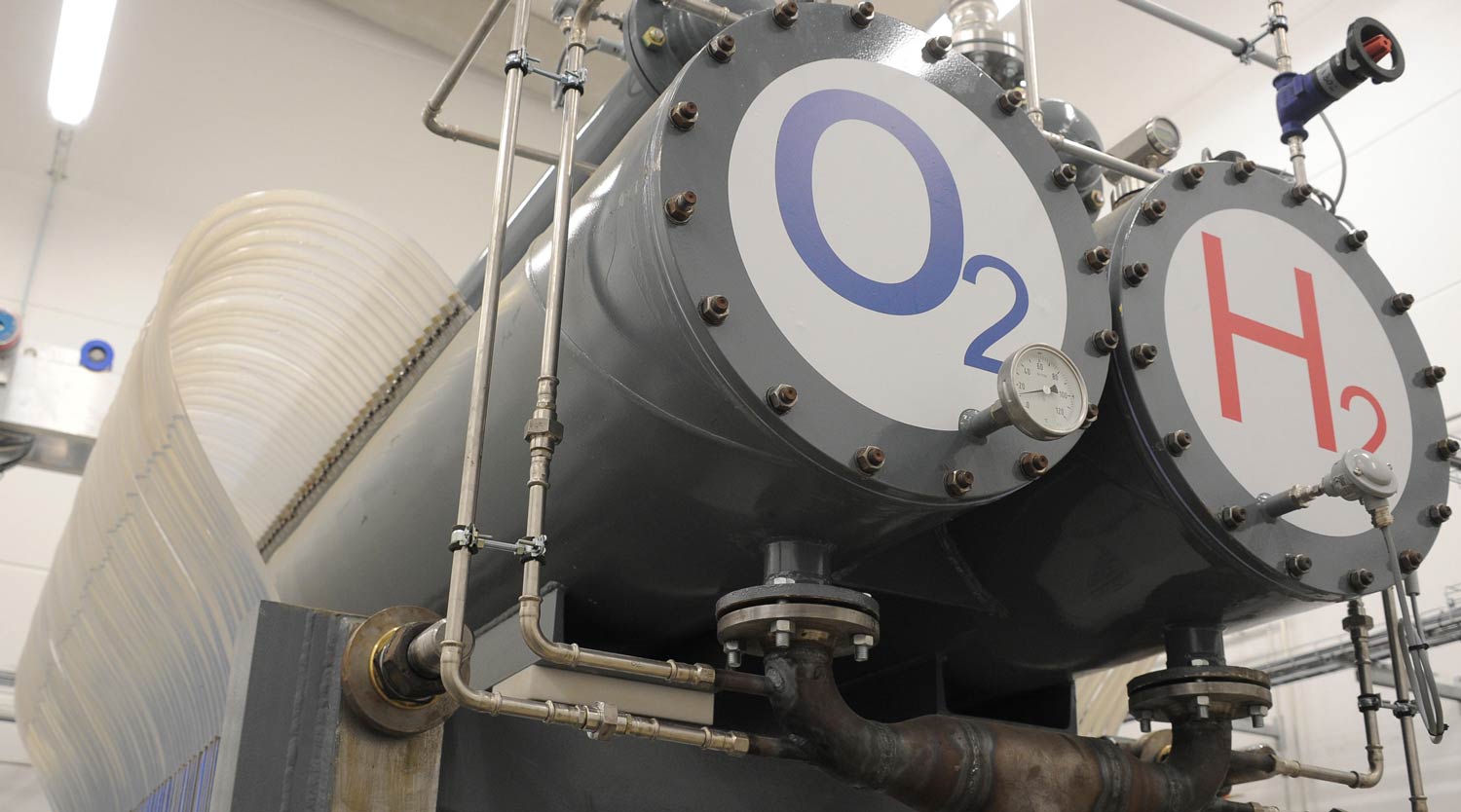
Electrolyzers use electricity to break water (H2O) into Hydrogen and Oxygen through a process called electrolysis. Most electrolyzers contain a cathode (negative charge), and anode (positive charge) and a membrane. Electricity is applied to the anode and cathode across a proton exchange membrane (PEM), which causes the water (H2O) to split into its component molecules – hydrogen (H2) and oxygen (O2). Most electrolyzer skids feature pumps, vents, storage tanks, a power supply, a separator and other components.
What are the requirements for pumps used in electrolyzers?
Small Footprint: Space is at a premium on an electrolyzer skid, given all the other equipment involved in the operation. Sealless pumps are preferred because they have no seals and they do not require seal support systems (which in some cases can be larger than the pump).
Reliability: Commercial PEM electrolyzers can have a service lifetime of 60,000-90,000 hours. Pumps that feed electrolyzers must be able to run continuously and reliably. Sealless magnetic drive pumps have an excellent track record for durability & reliability.
Simple Maintenance & Increased MTBF: Sealless magnetic drive pumps are easy to maintain and service onsite. With no seals to replace or maintain, HMD Kontro or ANSIMAG pumps offer reduced running costs and less downtime.
Chemical Compatibility: Water is not the only item pumped into an electrolyzer. Caustic chemicals, such as potassium hydroxide (KOH) or sodium hydroxide (NAOH) are required to increase the pH (potential Hydrogen) of water in the electrolyzer. During electrolysis, Hydrogen is removed from water, which lowers the water’s pH on the anode side, making the water more acidic. Just as water treatment plants pump caustic chemicals to balance (or increase) pH, electrolyzer applications do the same. As such, the pumps used must be able to stand up to the harsh nature of the chemicals being pumped, and they must do so for a long period of time.
No Leaks – Complete Fluid Containment: In conjunction with the main casing, the static containment shell of a magnetic drive pump forms a completely sealed liquid and pressure boundary with high chemical and thermal resistance. The sealless technology provides total fluid containment which eliminates the risks of leaks.
Compliance to Industry Standards: HMD Kontro and/or ANSIMAG pumps are designed to adhere to ISO, ASME and ANSI standards. (Some HMD pumps also comply with API standards). Being industry-certified means that global quality standards have been met, together with conformity to environmental and occupational & safety specifications.
Global Availability: Sundyne’s global delivery model minimizes costs and fulfills customized orders anywhere around the globe. End users benefit from increased flexibility and from on-hand, same day local service & support.
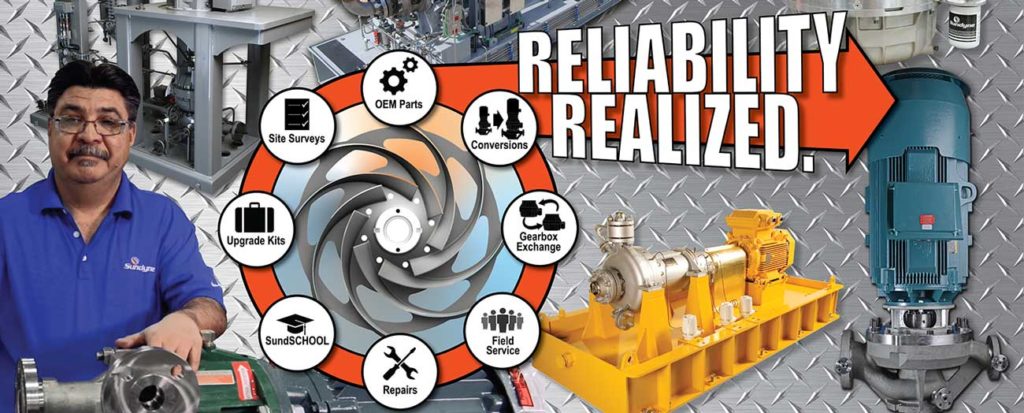
Cost effectiveness: The scope of green hydrogen usage across the industrial, transport, heating and power generation markets is expanding rapidly. As a result, the volume of electrolyzers that will be deployed years from now will also grow significantly. The pumping equipment used must not only address the requirements identified in this blog post – but it must do so in a cost-effective manner.
Electrolyzer Requirements Map Perfectly to Strengths of Sealless Mag Drive Pumps
Electrolysis Requirements
- Demanding power output
- High operating pressure
- Low electrical consumption
- Safety
- Small footprint
- Robust materials
- Corrosive liquids
Sealless Pump Benefits
- Wide performance range
- Pressures up to 185 bar
- Zero loss shell
- No seals, no leaks, no emissions
- Space saving close coupled design
- Different metallurgies available
- Total product containment
For more information, please visit:
